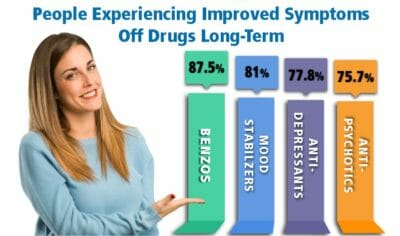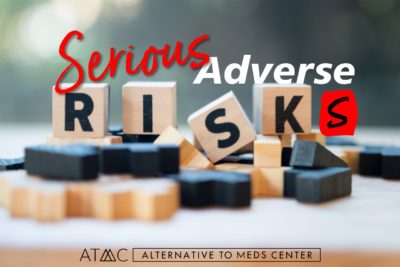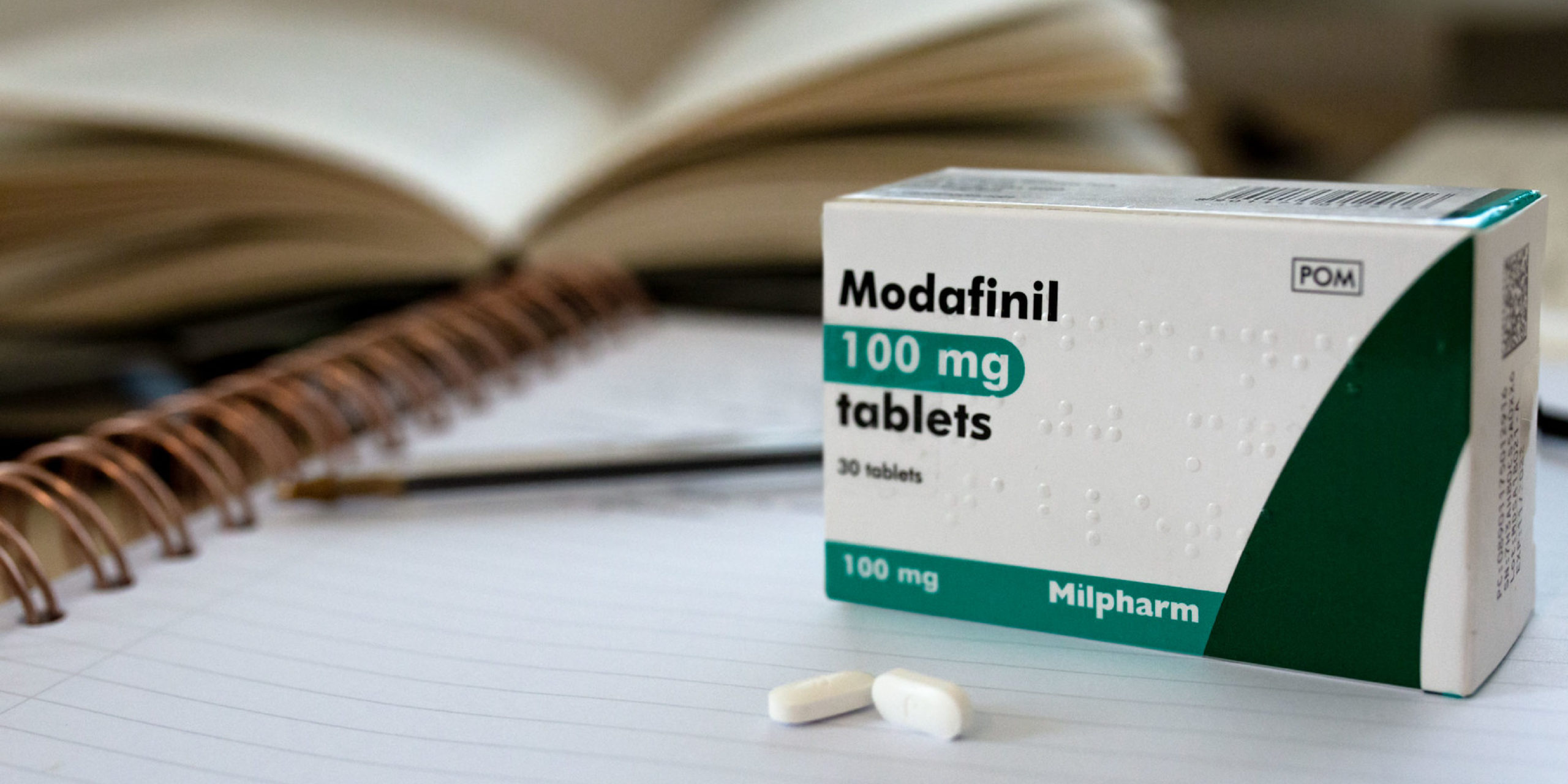Last Updated on January 10, 2024 by
Alternative to Meds Editorial Team
Medically Reviewed by Dr Samuel Lee MD
Table of Contents:

Last Updated on January 10, 2024 by
Alternative to Meds Editorial Team
Medically Reviewed by Dr Samuel Lee MD

A non-amphetamine central nervous system (CNS) stimulant, modafinil has been approved by the FDA to treat individuals with excessive sleepiness associated with narcolepsy, shift work sleep disorder (SWSD), and obstructive sleep apnea. Modafinil does not cure excessive sleepiness but helps to promote wakefulness.
Designated as a Schedule IV drug, modafinil has not shown a high potential for large-scale abuse, but the drug’s ability to promote focus and wakefulness led to its manufacturer marketing the drug for off-label diagnoses that oppose the FDA’s researched and medically approved indications for use.1
With little to no research showing evidence of its effectiveness or safety for off-label uses, the drug was marketed to physicians to treat certain psychological disorders, central nervous system diseases, and even attention deficit hyperactivity disorder (ADHD).1
The FDA-approved uses for modafinil (Provigil) include treatment for excessive sleepiness associated with the following conditions:2
Doctors have also prescribed the drug for a wide range of off-label uses. An article published in JAMA – Internal Medicine reported that in the seven-year period of its study, 89% of patients using modafinil didn’t have an on-label diagnosis.3,19
The wide range of conditions treated off-label with modafinil include:
People have gained access to modafinil without a prescription, thinking it will provide cognitive benefits. Used as a “smart drug” or “cognitive enhancer,” students in high and college or individuals in high-pressure jobs use modafinil, although research has found the drug to be ineffective in healthy, non-sleep-deprived individuals.4
Everyone reacts to medications differently, and modafinil can produce a wide range of reactions, similar in nature to other drugs that stimulate the central nervous system.2 If you notice any of these side effects or other changes while taking modafinil, discuss those changes with your doctor.
 Euphoria
EuphoriaModafinil can cause some severe, life-threatening side effects that require immediate medical intervention regardless of age. Call your physician or seek emergency assistance if you experience any of the following severe side effects or discover life-threatening physical or psychological changes when taking modafinil.
 Suicidal thoughts
Suicidal thoughts
If you or a loved one seeks to discontinue modafinil, the process of withdrawal from modafinil would be best managed in an inpatient setting. For safety reasons, adequate healthcare monitoring and treatment must be readily available.
Although some individuals have reported an absence of any significant Provigil withdrawal symptoms upon stopping Provigil, few clinical trials on the topic of withdrawal have been conducted.5
 Lethargy, sleepiness
Lethargy, sleepinessNot every person experiences withdrawal in the same way. For many, the return of original symptoms may be worse than Provigil withdrawal symptoms. You can find a successful resolution with safer Provigil alternatives if you need to manage your original symptoms.
The DEA does not consider modafinil to be a narcotic. Narcotics, or opioids, refer to substances that dull the senses to treat severe pain.
The opposite of opioids or narcotics, stimulants “stimulate” the central nervous system. The DEA classifies modafinil as a Schedule IV controlled substance and defines modafinil as a stimulant.6
Although classified with a low potential for abuse and dependence, modafinil addiction does exist.7 When taken at higher doses, modafinil can produce the same effects of euphoria and excitement as classic stimulants like cocaine, which widens its potential for abuse. Thus, modafinil should only be used under continuous medical supervision.
While few reports have documented abuse of modafinil or dependence on the drug, some case studies indicate that patients can develop a Provigil addiction.8 Because of the drug’s ability to produce the same effects as classic stimulants, researchers seek to heighten awareness of the drug’s potential for dependence abuse.9
According to researchers, modafinil has a complex way of working that scientists have yet to pinpoint. Experts do know that modafinil can block dopamine transporters effectively increasing dopamine in the brain.9
At higher doses, modafinil can produce effects seen in other CNS-stimulant drugs, such as euphoria and excitement. Modafinil’s ability to block dopamine transporters increases the drug’s potential for abuse.
If you need to stop using modafinil (Provigil) because the drug has induced a life-threatening reaction, you must do so in a medical setting where the risk to life can be mitigated, such as in an ICU.
If you’re choosing to stop your medication because modafinil caused unwanted side effects or you have become dependent, experts agree that you should undergo a gradual tapering off Provigil.
To begin tapering, you should first speak with your physician who can start the process. Medication tapering can then be completed at Alternative to Meds Center once all life-threatening factors have been addressed in a hospital setting.
Withdrawal times and symptoms vary from person to person, but most people can expect withdrawal timelines to be fairly short. Patients will likely notice withdrawal symptoms around 13 hours after stopping the medication, and for most people, modafinil will completely leave their bodies after four days.10
If patients experience mild withdrawal symptoms, tapering off of the medication can proceed smoothly, reducing every other day to monitor for any emerging symptoms. If withdrawal symptoms become more impactful, a slower weaning process will help the body get used to the absence of the drug.
Alternative to Meds Center can assist with the tapering process with holistic, vitamin-based support. These treatments can ease any discomfort and help soothe some of the factors that led to modafinil use in the first place.
While withdrawal timelines vary from person to person, it takes approximately four days on average for modafinil to get entirely out of your system.10 For most people, modafinil has a 13-hour half-life, meaning it takes 13 hours for the medication in your body to be reduced by half.11
The rate of metabolism—how long it takes your body to transform and eliminate medication—for any drug, including modafinil (Provigil), can be affected by individual genetics. The slower the rate of metabolism, the longer it takes your system to rid itself of the medication.
How quickly modafinil leaves your system depends on your genetics, but experts have reported that modafinil can be detected up to 80 hours after ingesting the drug.12
Routine drug testing usually does not include testing for modafinil. However, if you’re an athlete, you may be given drug tests specifically designed to detect this substance. In the world of sports, Modafinil has been banned by the World
Anti-Doping Agency since 2004.13
Several studies have been conducted to investigate whether modafinil can ease opiate withdrawal. While modafinil may show future promise like other drugs used in opiate withdrawal, experts agree that no single substance benefits all patients with stimulant dependence.14
Until scientists better understand the exact mechanisms of modafinil, experts can only speculate on the precise effects modafinil can have on opiate withdrawal on a large scale.
Studies have been conducted to determine the effectiveness of modafinil as an anti-relapse medication. While scientists agree that modafinil’s ability to increase dopamine shows promise as part of a comprehensive anti-relapse treatment, they agree that the drug’s potential for abuse necessitates further study, especially into how modafinil works.15
If you have found the adverse effects of Provigil have outweighed the benefits, Alternative to Meds Center can help you recover safely at our addiction treatment center.
Alternative to Meds Center strategically focuses on the important aspects of recovery, such as discovering and fully addressing the root causes of symptoms that led to taking prescription drugs in the first place.
Treatment programs at Alternative to Meds Center focus on these root causes when treating medication withdrawal. Through personalized treatment, patients can find safe modafinil alternatives without the threat of addiction or adverse side effects.
The body naturally produces the antioxidant glutathione, which combats inflammation and other damage done by harmful oxidizing substances. Nebulized glutathione treatments complement recovery by increasing glutathione levels throughout the lungs and body.
Nebulized glutathione treatments result in the highest concentration of glutathione levels in the lining of the lower respiratory surfaces, which help reduce symptoms of modafinil withdrawal.16
Impaired muscle tone and low energy can be remedied by therapeutic massage and getting active. Massage can eliminate toxins within the body, help the patient maintain a healthy mental status, and ease stimulant withdrawal symptoms. Therapeutic massage has also been shown to reduce withdrawal-induced anxiety, making it an effective tool in managing the mental effects of withdrawal.17
Focusing on the root causes for taking modafinil, Alternative to Meds Center addresses the factors that led to your condition before modafinil was prescribed. To increase energy levels and lower sleep disturbances, Alternative to Meds Center uses targeted nutrition and supplementation. This approach properly rebalances your body’s chemistry to improve your health.
At Alternative to Meds Center, we focus on teaching de-stressing techniques and provide personal counseling and life coaching. With this approach, you receive customized coping and healing skills best suited to your needs.
Aided by a healing setting and a caring staff of professionals, holistic medication tapering at Alternative to Meds Center addresses both the psychological and neurochemical processes of addiction. These methods can address the adverse physical and mental health effects caused by modafinil withdrawal.

NAD+ IV therapy has treated numerous physiological and neurological conditions for years. It encourages cell regeneration throughout your body and reduces the impact of modafinil withdrawal symptoms.[18] When combined with Alternative to Meds Center’s additional support programs, NAD+ therapy can help reduce the discomfort of modafinil withdrawal for you or a loved one.
Taking medication means weighing the benefits and risks. Because of its stimulant behavior, modafinil has the potential to be abused and cause dependency on the drug. If you prefer to avoid the risks of medication, you can discuss beneficial, nonmedical options with your healthcare provider.
As with any stimulant medication, discontinuing modafinil should always be done under medical supervision. If you find you or a loved one needs to taper off of your medication, contact Alternative to Meds Center and speak with a professional.
1. Justice.gov. United States v. Cephalon, Inc., 2:08-cr-00598 (E.D. Pa.) [cited March 17, 2022]
2. FDA.gov. “PROVIGIL® (modafinil) Tablets.” [cited February 12, 2022]
3. Peñaloza RA, Sarkar U, Claman DM, Omachi TA. JamaNetwork.com. “Trends in On-label and Off-label Modafinil Use in a Nationally Representative Sample.” [cited February 12, 2022]
4. Battleday RM, Brem AK. Pubmed.gov. “Modafinil for cognitive neuroenhancement in healthy non-sleep-deprived subjects: A systematic review.” [cited February 12, 2022]
5. Accessdata.FDA.gov. “ProVigil Instructions.” [cited February 12, 2022]
6. Deadiversion.usdoj.gov. Placement of Modafinil into Schedule IV Ruling. 21 U.S.C. 811, 812, 871(b). [cited March 17, 2022]
7. Krishnan R, Chary KV. Pubmedcentral.gov. “A rare case modafinil dependence.” [cited February 12, 2022]
8. Wuo-Silva Raphael, et. al. Frontiersin.org. “Modafinil Induces Rapid-Onset Behavioral Sensitization and Cross-Sensitization with Cocaine in Mice: Implications for the Addictive Potential of Modafinil.” [cited March 17, 2022]
9. Volkow ND, Fowler JS, Logan J, et al. Pubmedcentral.gov. “Effects of Modafinil on Dopamine and Dopamine Transporters in the Male Human Brain: Clinical Implications.” [cited February 12, 2022]
10. Seng YL, Uralets V, Lin CT, Kuo FH. Pubmed.gov. “Detection of modafinil in human urine by gas chromatography-mass spectrometry.” [cited February 12, 2022]
11. Darwish M, Kirby M, Hellriegel ET, Robertson P Jr. Pubmed.gov.“Armodafinil and modafinil have substantially different pharmacokinetic profiles despite having the same terminal half-lives: analysis of data from three randomized, single-dose, pharmacokinetic studies.” [cited March 17, 2022]
12. Dubey S, Ahi S, Reddy IM, Kaur T, Beotra A, Jain S. Pubmed.gov. “A novel study of screening and confirmation of modafinil, adrafinil and their metabolite modafinilic acid under EI-GC-MS and ESI-LC-MS-MS ionization.” [cited March 17, 2022]
13. Wada-ama.org. The prohibited list. [cited March 17, 2022]
14. Anderson AL, Reid MS, Li SH, et al. Pubmedcentral.gov. “Modafinil for the treatment of cocaine dependence.” [cited February 12, 2022]
15. Tahsili-Fahadan P, Malcolm R, Aston-Jones G. Pubmedcentral.gov. “Modafinil: an anti-relapse medication.” [cited February 12, 2022]
16. Prousky J. Pubmedcentral.gov. “The Treatment of Pulmonary Diseases and Respiratory-Related Conditions with Inhaled (Nebulized or Aerosolized) Glutathione.” [cited February 12, 2022]
17. Black S, Jacques K, Webber A, Spurr K, Carey E, Hebb A, Gilbert R. Pubmed.gov. “Chair massage for treating anxiety in patients withdrawing from psychoactive drugs.” [cited March 17, 2022]
18. FDA.gov. “Nicotinamide Adenine Dinucleotide (NAD+).” [cited February 12, 2022]
19. Greenblatt K, Adams N. Modafinil. [Updated 2023 Feb 6]. In: StatPearls [Internet]. Treasure Island (FL): StatPearls Publishing; 2023 Jan-. Available from: https://www.ncbi.nlm.nih.gov/books/NBK531476/ [cited 2023 May 22]
Originally Published Sep 13, 2018 by Diane Ridaeus

Dr. Samuel Lee is a board-certified psychiatrist, specializing in a spiritually-based mental health discipline and integrative approaches. He graduated with an MD at Loma Linda University School of Medicine and did a residency in psychiatry at Cedars-Sinai Medical Center and University of Washington School of Medicine in Seattle. He has also been an inpatient adult psychiatrist at Kaweah Delta Mental Health Hospital and the primary attending geriatric psychiatrist at the Auerbach Inpatient Psychiatric Jewish Home Hospital. In addition, he served as the general adult outpatient psychiatrist at Kaiser Permanente. He is board-certified in psychiatry and neurology and has a B.A. Magna Cum Laude in Religion from Pacific Union College. His specialty is in natural healing techniques that promote the body’s innate ability to heal itself.

Diane is an avid supporter and researcher of natural mental health strategies. Diane received her medical writing and science communication certification through Stanford University and has published over 3 million words on the topics of holistic health, addiction, recovery, and alternative medicine. She has proudly worked with the Alternative to Meds Center since its inception and is grateful for the opportunity to help the founding members develop this world-class center that has helped so many thousands regain natural mental health.

Can you imagine being free from medications, addictive drugs, and alcohol? This is our goal and we are proving it is possible every day!
Read All StoriesView All Videos